Ganesh Dasika
Rank and run-time aware compression of NLP Applications
Oct 06, 2020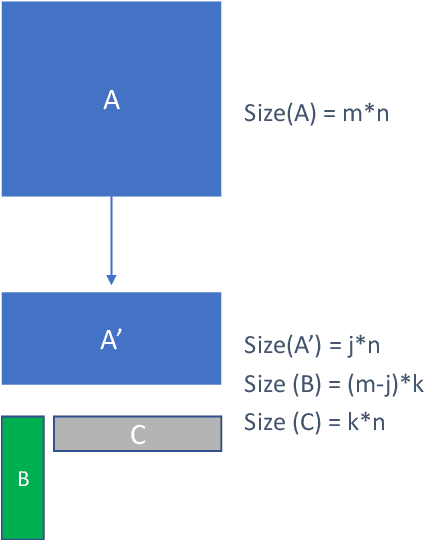
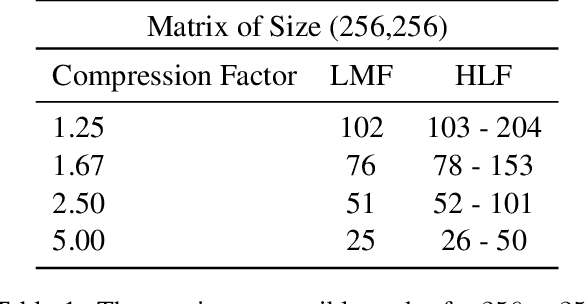
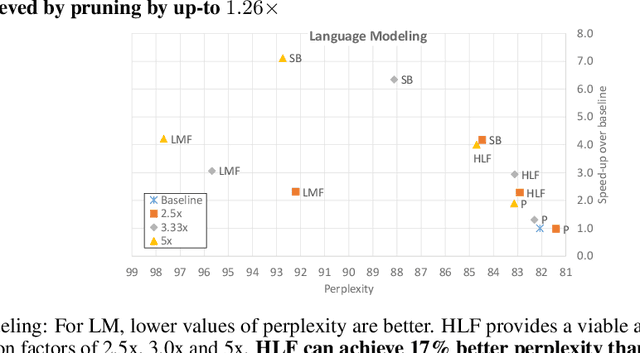
Abstract:Sequence model based NLP applications can be large. Yet, many applications that benefit from them run on small devices with very limited compute and storage capabilities, while still having run-time constraints. As a result, there is a need for a compression technique that can achieve significant compression without negatively impacting inference run-time and task accuracy. This paper proposes a new compression technique called Hybrid Matrix Factorization that achieves this dual objective. HMF improves low-rank matrix factorization (LMF) techniques by doubling the rank of the matrix using an intelligent hybrid-structure leading to better accuracy than LMF. Further, by preserving dense matrices, it leads to faster inference run-time than pruning or structure matrix based compression technique. We evaluate the impact of this technique on 5 NLP benchmarks across multiple tasks (Translation, Intent Detection, Language Modeling) and show that for similar accuracy values and compression factors, HMF can achieve more than 2.32x faster inference run-time than pruning and 16.77% better accuracy than LMF.
Pushing the limits of RNN Compression
Oct 09, 2019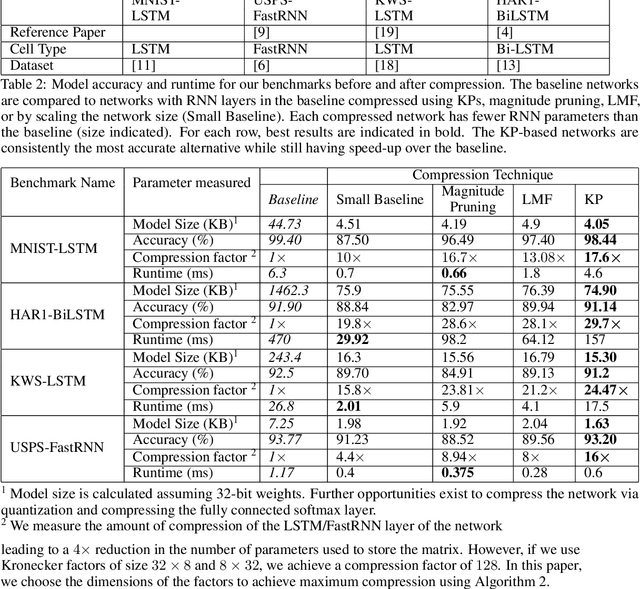
Abstract:Recurrent Neural Networks (RNN) can be difficult to deploy on resource constrained devices due to their size. As a result, there is a need for compression techniques that can significantly compress RNNs without negatively impacting task accuracy. This paper introduces a method to compress RNNs for resource constrained environments using Kronecker product (KP). KPs can compress RNN layers by 16-38x with minimal accuracy loss. We show that KP can beat the task accuracy achieved by other state-of-the-art compression techniques (pruning and low-rank matrix factorization) across 4 benchmarks spanning 3 different applications, while simultaneously improving inference run-time.
* 6 pages. arXiv admin note: substantial text overlap with arXiv:1906.02876
Compressing RNNs for IoT devices by 15-38x using Kronecker Products
Jun 18, 2019
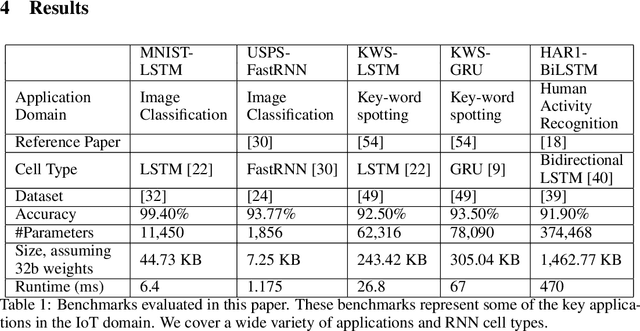

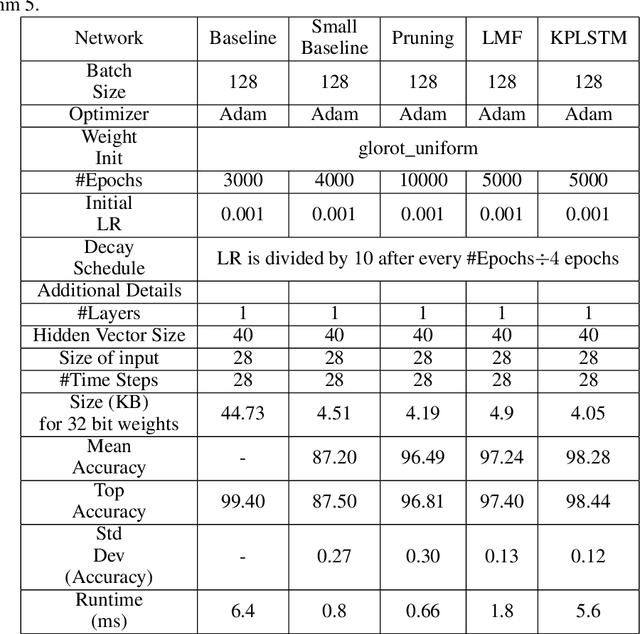
Abstract:Recurrent Neural Networks (RNN) can be large and compute-intensive, making them hard to deploy on resource constrained devices. As a result, there is a need for compression technique that can significantly compress recurrent neural networks, without negatively impacting task accuracy. This paper introduces a method to compress RNNs for resource constrained environments using Kronecker products. We call the RNNs compressed using Kronecker products as Kronecker product Recurrent Neural Networks (KPRNNs). KPRNNs can compress the LSTM[22], GRU [9] and parameter optimized FastRNN [30] layers by 15 - 38x with minor loss in accuracy and can act as in-place replacement of most RNN cells in existing applications. By quantizing the Kronecker compressed networks to 8 bits, we further push the compression factor to 50x. We compare the accuracy and runtime of KPRNNs with other state-of-the-art compression techniques across 5 benchmarks spanning 3 different applications, showing its generality. Additionally, we show how to control the compression factors achieved by Kronecker products using a novel hybrid decomposition technique. We call the RNN cells compressed using Kronecker products with this control mechanism as hybrid Kronecker product RNNs (HKPRNN). Using HKPRNN, we compress RNN Cells in 2 benchmarks by 10x and 20x achieving better accuracy than other state-of-the-art compression techniques.
Run-Time Efficient RNN Compression for Inference on Edge Devices
Jun 18, 2019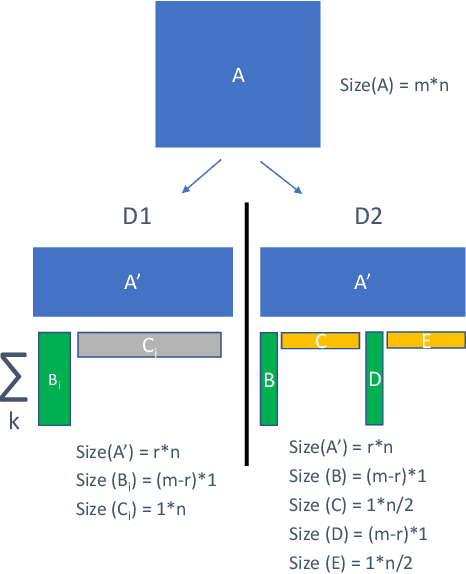
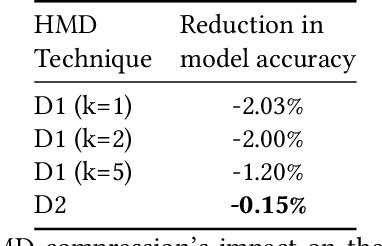
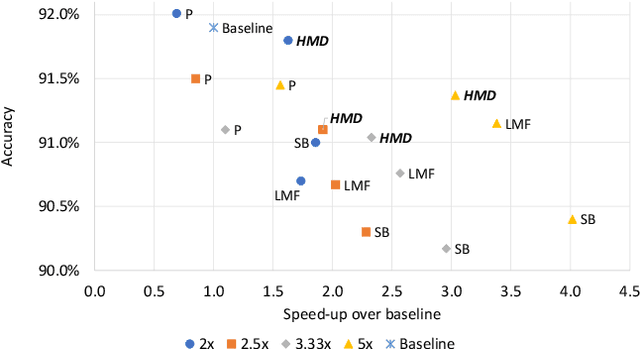
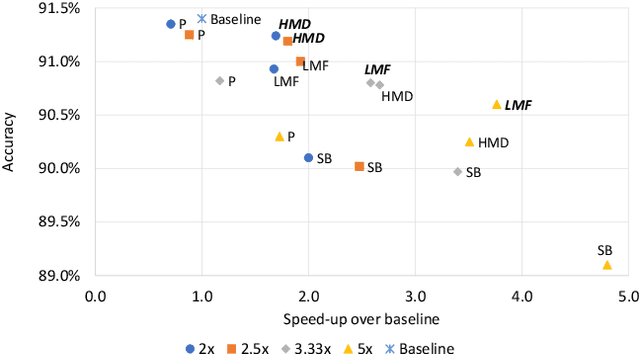
Abstract:Recurrent neural networks can be large and compute-intensive, yet many applications that benefit from RNNs run on small devices with very limited compute and storage capabilities while still having run-time constraints. As a result, there is a need for compression techniques that can achieve significant compression without negatively impacting inference run-time and task accuracy. This paper explores a new compressed RNN cell implementation called Hybrid Matrix Decomposition (HMD) that achieves this dual objective. This scheme divides the weight matrix into two parts - an unconstrained upper half and a lower half composed of rank-1 blocks. This results in output features where the upper sub-vector has "richer" features while the lower-sub vector has "constrained" features". HMD can compress RNNs by a factor of 2-4x while having a faster run-time than pruning and retaining more model accuracy than matrix factorization. We evaluate this technique on 3 benchmarks.
Ternary Hybrid Neural-Tree Networks for Highly Constrained IoT Applications
Mar 04, 2019



Abstract:Machine learning-based applications are increasingly prevalent in IoT devices. The power and storage constraints of these devices make it particularly challenging to run modern neural networks, limiting the number of new applications that can be deployed on an IoT system. A number of compression techniques have been proposed, each with its own trade-offs. We propose a hybrid network which combines the strengths of current neural- and tree-based learning techniques in conjunction with ternary quantization, and show a detailed analysis of the associated model design space. Using this hybrid model we obtained a 11.1% reduction in the number of computations, a 52.2% reduction in the model size, and a 30.6% reduction in the overall memory footprint over a state-of-the-art keyword-spotting neural network, with negligible loss in accuracy.
Efficient Winograd or Cook-Toom Convolution Kernel Implementation on Widely Used Mobile CPUs
Mar 04, 2019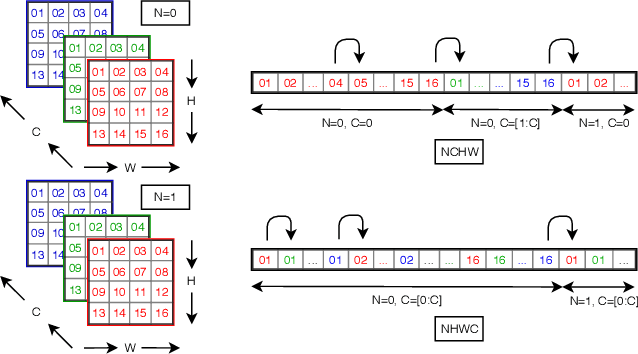

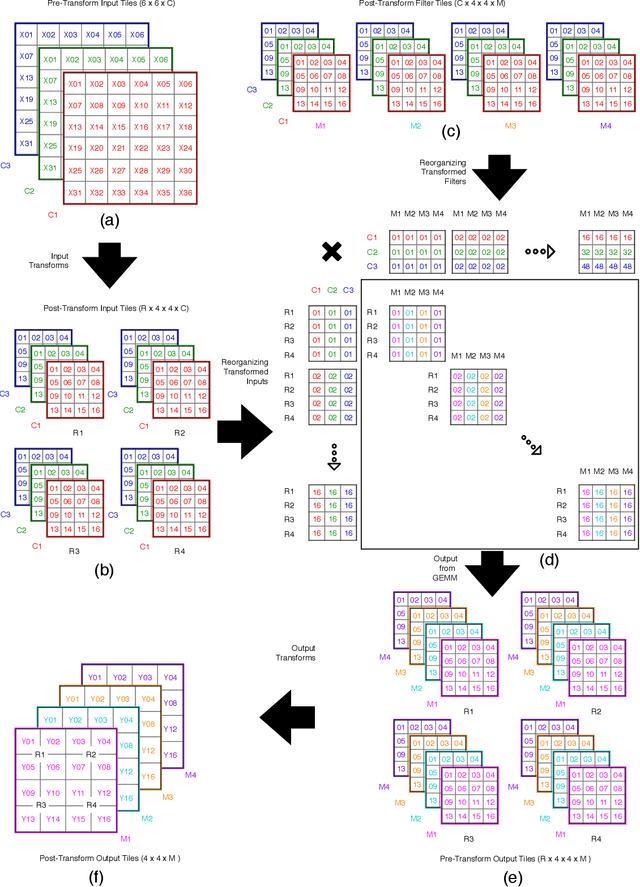
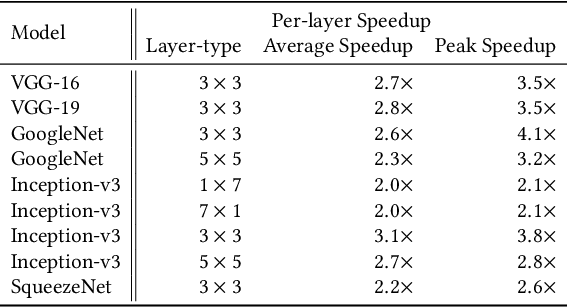
Abstract:The Winograd or Cook-Toom class of algorithms help to reduce the overall compute complexity of many modern deep convolutional neural networks (CNNs). Although there has been a lot of research done on model and algorithmic optimization of CNN, little attention has been paid to the efficient implementation of these algorithms on embedded CPUs, which usually have very limited memory and low power budget. This paper aims to fill this gap and focuses on the efficient implementation of Winograd or Cook-Toom based convolution on modern Arm Cortex-A CPUs, widely used in mobile devices today. Specifically, we demonstrate a reduction in inference latency by using a set of optimization strategies that improve the utilization of computational resources, and by effectively leveraging the ARMv8-A NEON SIMD instruction set. We evaluated our proposed region-wise multi-channel implementations on Arm Cortex-A73 platform using several representative CNNs. The results show significant performance improvements in full network, up to 60%, over existing im2row/im2col based optimization techniques
 Add to Chrome
Add to Chrome Add to Firefox
Add to Firefox Add to Edge
Add to Edge